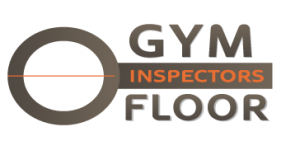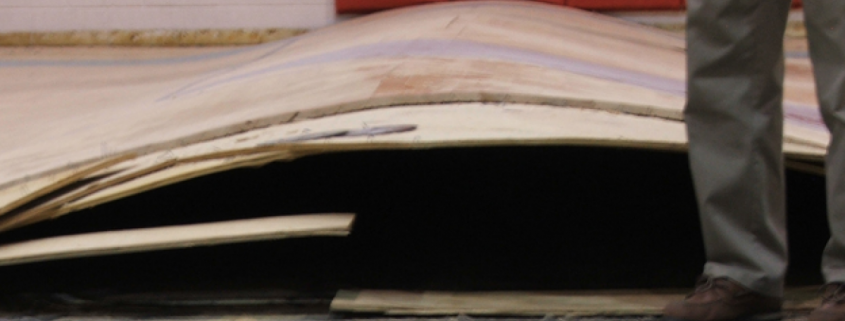Wood Sports Floors And Water
It is not a question of “if” your wood gym floor gets wet;” it really is a matter of “when” your wood gym floor gets wet. It is a known fact that most wood gym floors will experience water damage sometime during their useful life. You can protect your investment over the life of the floor by paying attention to a few simple items. Most owners are educated on how to keep environmental conditions like temperature and relative humidity in check; however, very few know what they can do to protect themselves from the inevitable: water damage.
Most wood gym floors will eventually get wet from a variety of events such as floods, roof failures, plumbing challenges, poor door closures, and many other issues. Since wood is a hydroscopic material, it rapidly absorbs freestanding water and reacts to this water by swelling, eventually buckling, and ultimately completely failing. Most owners know insurance claims on this type of damage are not as easy as it may sound. Typically, deductibles are set very high, and out-of-pocket expenses to the owner are not pain-free.
This begs the question of how owners can protect themselves. Technology and system design play a key role in protection. The wood sports flooring industry has recognized this for many years, and system designs typically promote air flow and dimensional stability.
Dimensional stability is more than the measurement of how much a system moves; ultimately, it comes down to how it recovers. Dimensional lumber used in sub-floor construction has a better chance to return to normal when dried correctly than plywood. Plywood relies heavily on adhesives, and, when subjected to water, there are no guarantees that the forces of movement will not cause structural breakdown of these adhesives. System designs utilizing dimensional lumber are abundant in the industry and should seriously be considered.
The benefits of air flow and the role it plays is another key component. However, the ease of moving air under a floor is not as simple as it sounds. Sometimes, systems limit air flow and do not provide even distribution of air. Other designs have no air flow and actually utilize full coverage resilient layer components, similar to carpet pad, that retain moisture and block air flow. Lack of air movement, commonly referred to as dead air, combined with dark spaces provides excellent conditions for mold growth.
Even more challenging is knowing what the conditions are under the floor without cutting a hole in the product. Monitoring devices can be placed under the floor to help monitor moisture intrusion. Monitoring devices along with installed blowers will automatically turn on when conditions change to an unsafe level. Owners can be assured their floor has a fighting chance to recover when it gets wet even when they cannot see the moisture.
Owners like Holy Cross Catholic School in New Orleans understand the need to protect their investment. Holy Cross worked closely with Broadmoore Design Group in Metairie, Louisiana, to design a floor system that allowed for excellent air flow and incorporated PowerVent, a unique blower system. This system constantly monitors moisture and temperature levels under the floor and automatically turns on when conditions unexpectedly change.
According to Ray Brown, senior project architect, “In the course of designing and constructing the new Holy Cross Student Center, we found ourselves in need of a sports flooring system that would protect not only the athletes but the owner, as well. This was our first project containing a resilient wood sports floor and it was being installed in the very humid climate of Southern Louisiana. We educated ourselves and ultimately selected a performance floor system that accommodates the PowerVent AirFlow system. This design gives all parties involved piece of mind that when challenges occur we know we have done everything possible to protect the owner’s investment.”
Denise Day, executive director of Kennett Area YMCA, Kennett Square, Pennsylvania, gave a perfect example of the added protection PowerVent provides.
He said, “We were amazed that when 1,000 gallons of water flooded our gym floor from a broken sprinkler head. The PowerVent Air Flow system handled it beautifully. We were able to keep right on serving our members by using the facility without any major interruptions. The floor still looks and performs just great.”
The key to handling inevitable moisture challenges really comes from understanding what is available and applying smart design principles that protect your investment.
Here are a few simple steps that you can do to protect your largest piece of sports equipment within your facility:
1). AirFlow: Make sure your floor system can be properly ventilated under the floor once you remove any perimeter wall base. Floor systems that have no air flow should be avoided.
2). Roof Drains: Make sure your roof drains are unobstructed and can divert excess water away from the building to an area that can quickly move water away.
3). Vapor Barrier: Make sure you use a minimum 6mil vapor barrier and, when possible, include additional barriers to prevent vapor transmission through the subsurface.
4). Maple Exposure: Sometimes subfloor construction actually impedes the drying process. Look for subfloor construction that allows for some portion of the maple to be exposed to air movement under the floor.
5). Weather Proof: Make sure your external doors are properly weather-proofed.
6). Drinking Fountains: Avoid designing drinking fountains in the space occupied by a wood gym floor.
The Maple Flooring Manufactures Association (MFMA), WWW.MAPLEFLOOR.ORG, outlines through a position statement the challenges you can expect from water infiltration are abundant and should not be ignored.
Here are just a few they address:
Wood flooring may have different issues that arise after moisture infiltration has occurred. Examples of moisture infiltration would include roof leaks, large spills, burst pipe, etc. The following is a list of issues that have frequently occurred.
1). Compression Set and Associated Shrinkage: Moisture infiltration may cause excessive shrinkage gaps between flooring strips that are commonly larger than normal seasonal shrinkage gaps after the wood returns to its normal moisture content range.
2). Cupping and/or Crowning: Cupping and/or crowning may take place from moisture infiltration due to expansion pressure from the flooring strips taking in excessive moisture.
3). Flooring Issues: Moisture infiltration may affect the integrity of the flooring and the deterioration of the flooring fasteners. The most common effect on flooring from moisture infiltration is in the form of splits and end checks.
4). Finish Issues: Excessive expansion and contraction of the flooring strips may cause bonding issues of the floor finish, game lines, and logos.
5). Mold and Dry Rot: Mold and dry rot on or below flooring strips may be a symptom of prolonged exposure to moisture. Contact your local health officials for local ordinance on proper procedures when dealing with mold.
Floyd Shelton is a past president of the Maple Flooring Manufacturers Association and also served 17 years as chairman of the association’s Technical Committee. He now owns Gym Floor Inspectors: WWW.GYMFLOORINSPECTORS.COM






Leave a Reply
Want to join the discussion?Feel free to contribute!